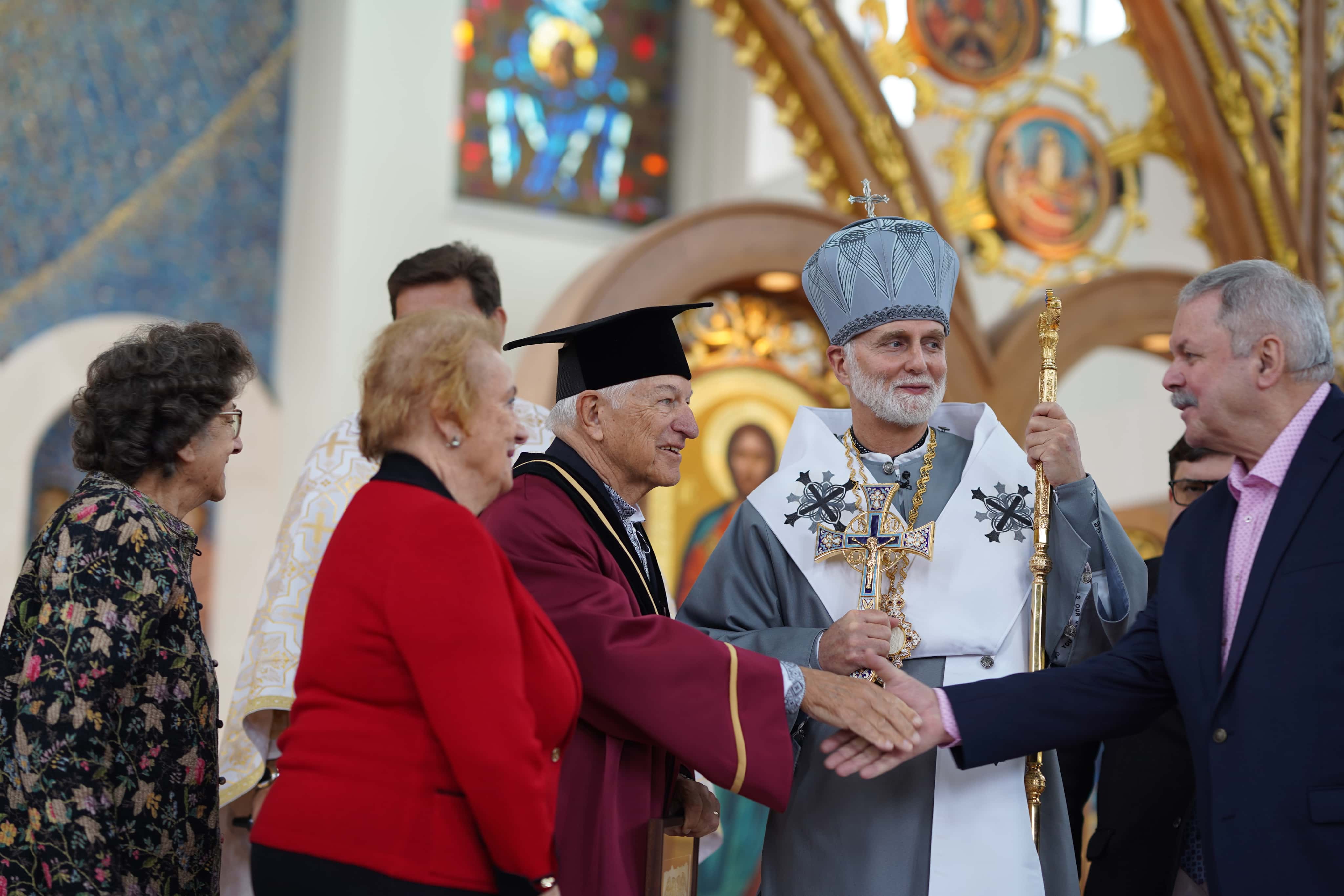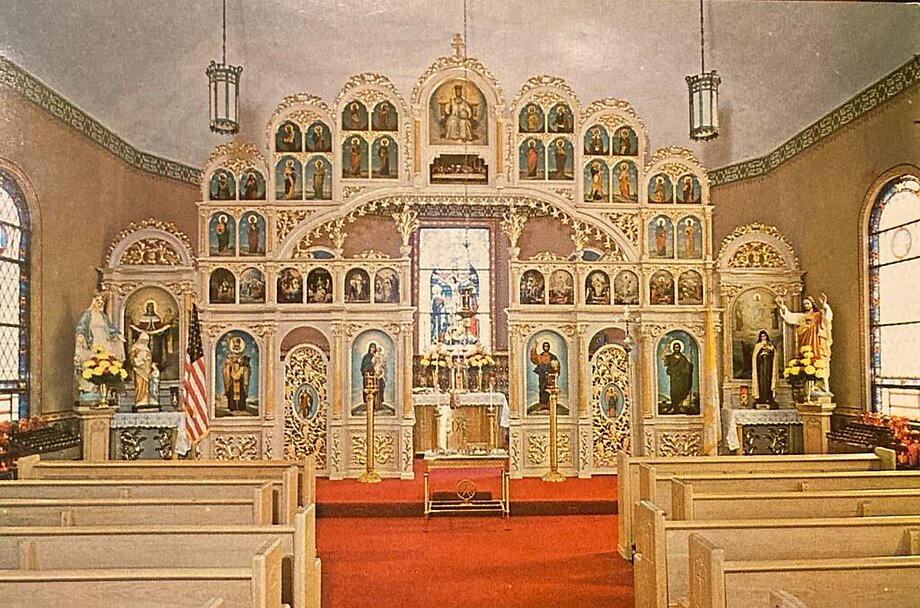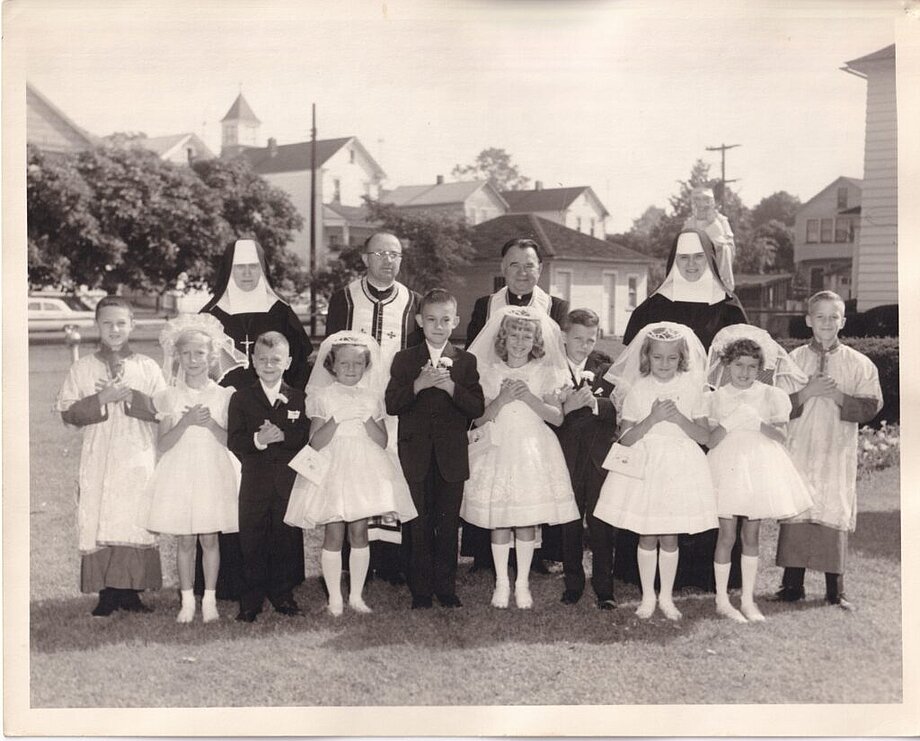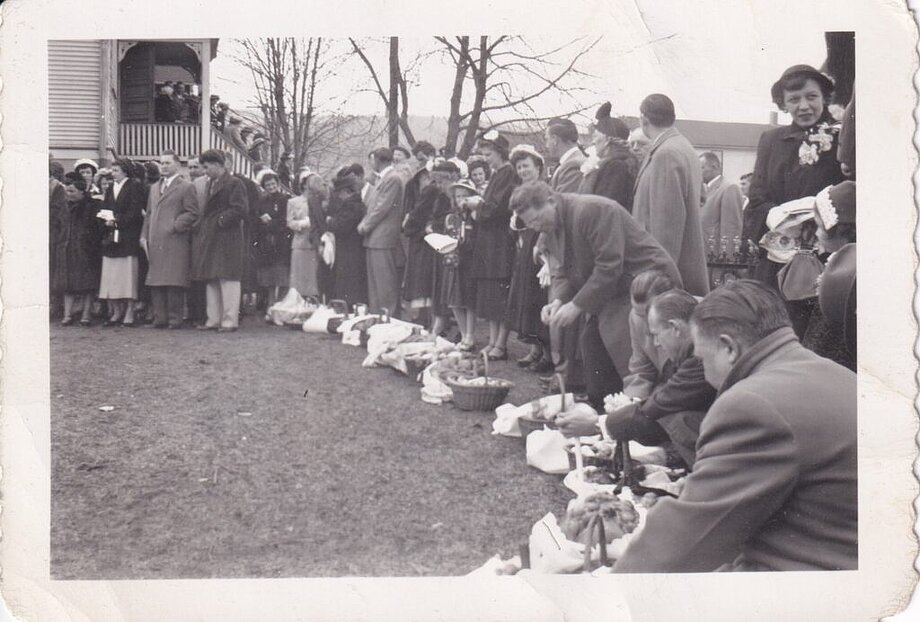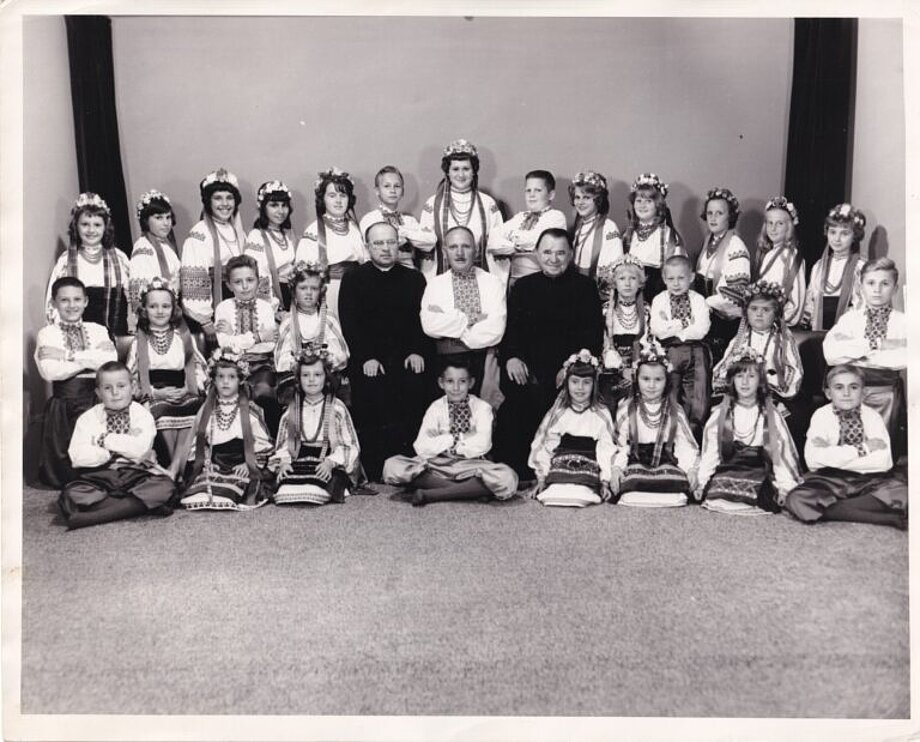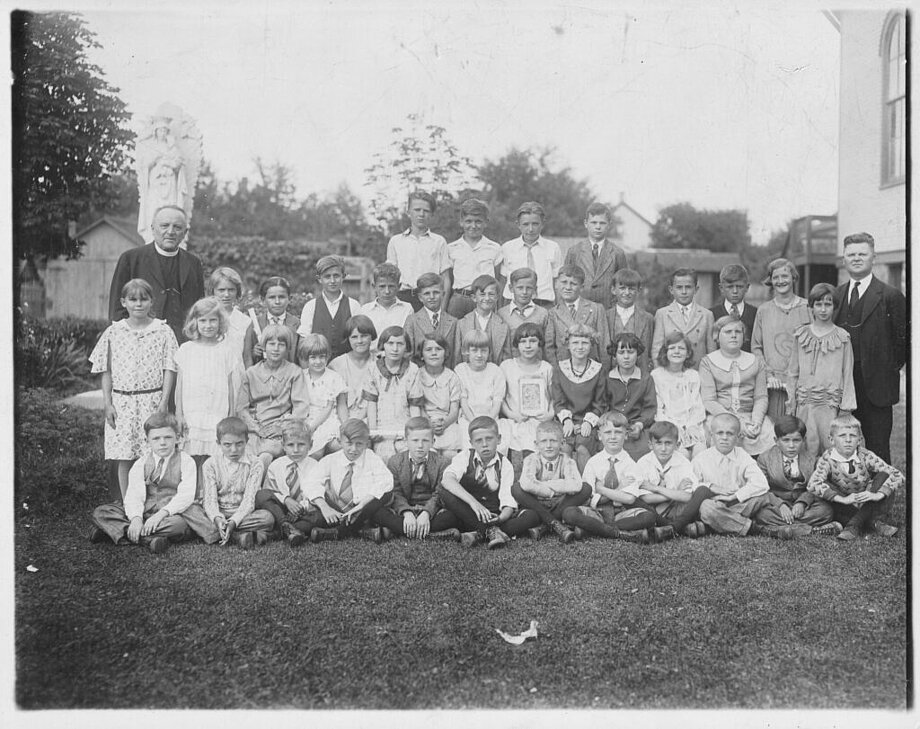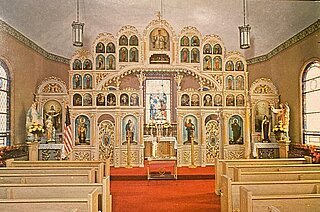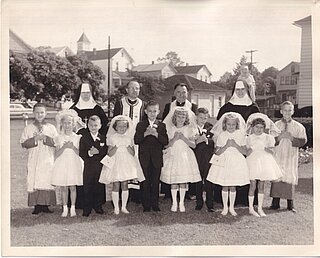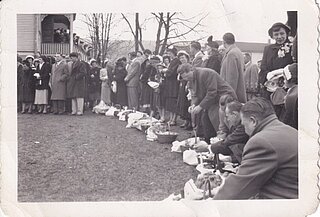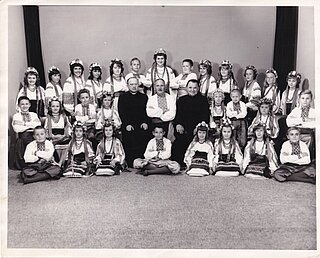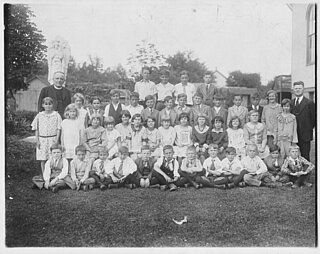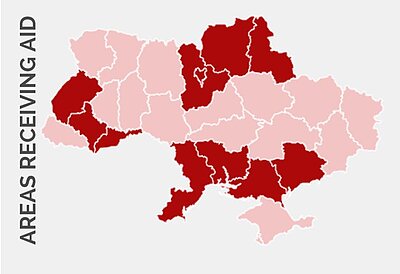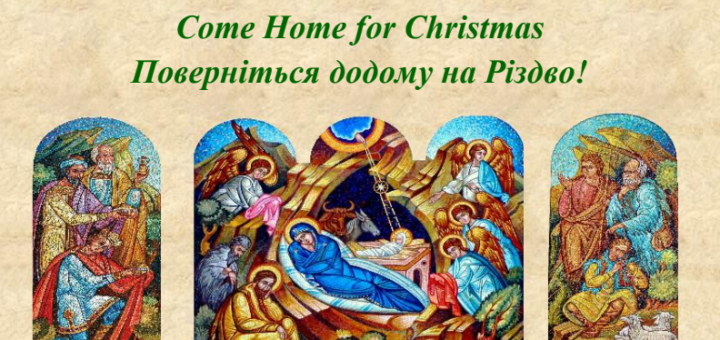- Christmas Appeal 2025
- Archeparchy
- Our faith
- Offices and ministries
- News
- Events
- Parishes
- Youth Protection
Transfiguration of Our Lord Ukrainian Catholic Church, Nanticoke
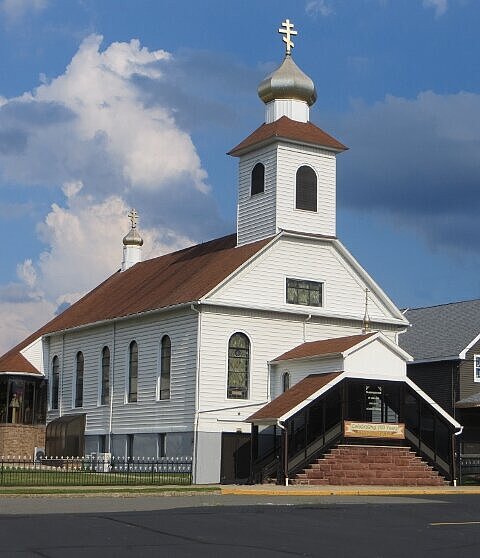
Liturgical Schedule
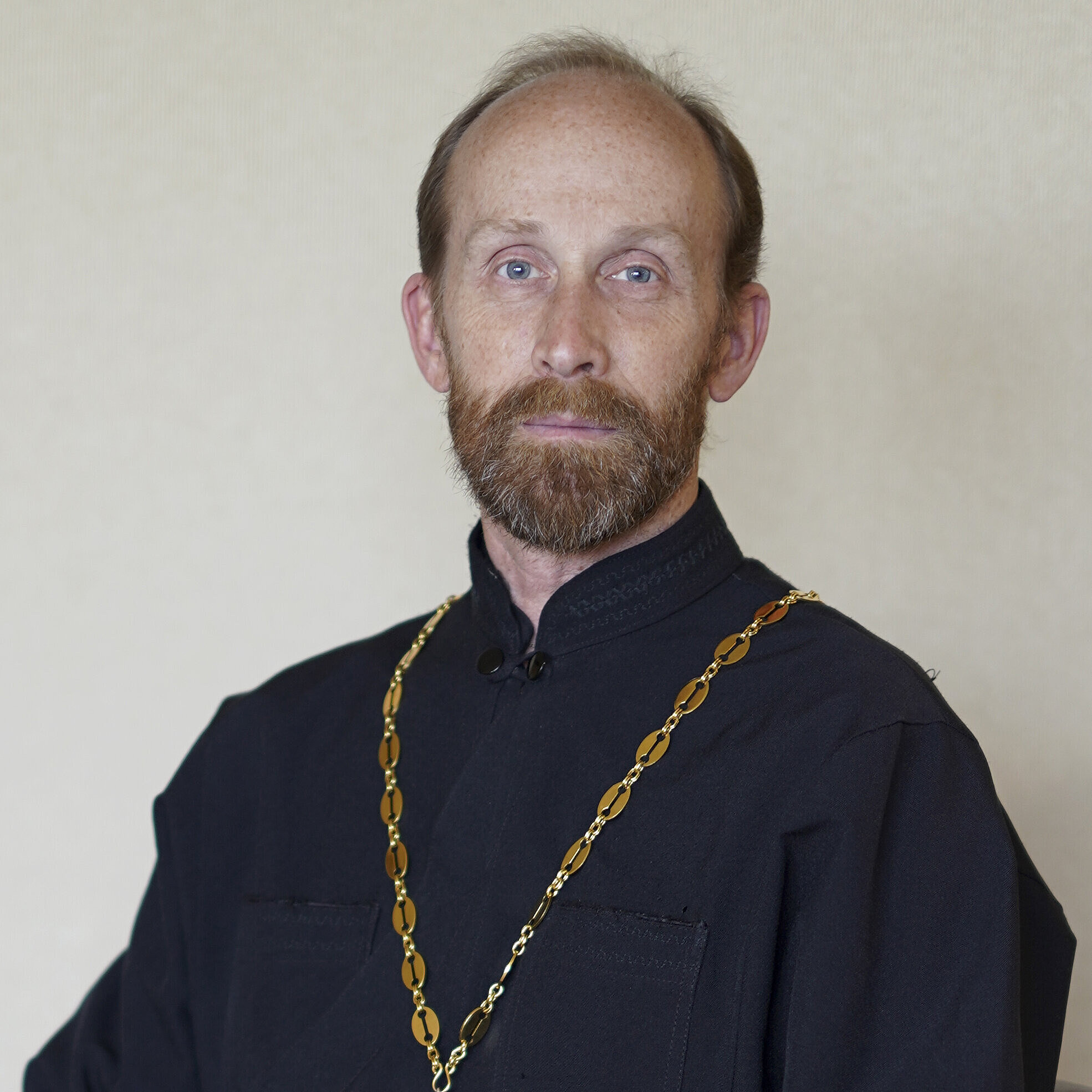
History of the parish
The history of Transfiguration of Our Lord Ukrainian Catholic Church is complex and cannot be told without reference to our ancestors. The Ukrainian community of the Hanover Section of Nanticoke (formerly known as Rhone, Pennsylvania) consists of descendants of immigrants from the Lemkivshchyna and Peremyshl regions. These immigrants arrived in this area between 1880 and 1914 from Zavadka Rymanivska, Synyava Rymaniv, Hachiv, Stershny, Peremyshl, Lubachiv, Zbarazh, and Rohatyn.
BUILDING THE CHURCH – THE EARLY YEARS
The first act of the Ukrainian immigrants upon finding a job in the coal mines or in the factories was the erection of a place of worship and, concurrently with it, the establishment of fraternal lodges to protect their family in the event of their natural or accidental deaths. The main objective of the lodges was to maintain a fund from which the sick from among their membership could be supported, the dead buried and their survivors assisted financially. They were also supposed to establish schools in which the children of the members and of other persons of Ukrainian descent could be educated according to the tenets of the Ukrainian Catholic Church of the Byzantine Rite. One such lodge was established in the Hanover Section of Nanticoke in 1898. It was called the “Saint Spasa United Greek Catholic Society of Rhone, Pennsylvania”. Its objectives were: “to assist one another in acts of benevolence and charity, to promote religion and morality, to educate its members in the observance of the laws of this commonwealth, and to foster in them the duties and citizenship”. The first subscribers of the society were: John Wowk, Anthony Grozio, John Bobak, Kuzma Sura, Peter Sivilich and Wasyl Blysak. They signed the charter on November 28, 1898.
In the early years, Ukrainian pioneers of the Hanover Section of Nanticoke had no church of their own and attended the Ukrainian churches in Alden, Glen Lyon, and Plymouth. It was not until 1909 that they decided to establish their own parish and apply for a charter for what became known as the “Saint Spasa United Greek Catholic Church and Congregation of Rhone, Pennsylvania.” They elected a board of trustees consisting of twelve lay members: six from Galicia and six from Subcarpathia, which was referred to in those days as Uhorshchyna. Those elected for the first year were: Fedko Cirko, John Bobak, Andrew Yurchak, John Brusina, Stephen Kotsur, Johann Paskiewicz, Tymko Storosko, Wasyl Storosko, John Koplun, Wasyl Kopco, John Turnak, and Hryts Homiak. The subscribers were: John Bobak, Andrew Yurchak, Johann Pskiewicz, John Turnak, and Tymko Hulyk.
At the first organizational meeting held at the home of Theodore Dolynsky in October 1909, about sixty families decided to have Tymko Storosko and Johann Paskiewicz represent them in Philadelphia to petition Bishop Soter Ortynsky for permission to build a church in Hanover and to have a pastor of their own. At first, the Bishop was opposed to building another church in a territory where other Ukrainian churches were already in existence. Subsequently, he granted permission. Meanwhile, the congregation purchased for $600 a lot in Nanticoke at Chestnut, Cemetery, and Field Streets. At a meeting of the male members of the congregation in the first half of 1911, it was decided “to transfer to Bishop Soter Ortynsky, or to his successors, the real estate now owned by this corporation…” (The property mentioned above). Johann Paskiewicz served as the attorney, and the document was signed in the presence of Thomas Butkiewicz by Fedko Cirko, the president, and Andrew Yurchak, the secretary.
In 1911, another lot on Grove Street, which is now known as Center Street, was purchased from John and Maria Paskiewicz for the sum of $1,250. This property was to be used for the building of the church. The work began in September, 1911. It was carried out mostly by male parishioners. However, some female parishioners also participated in the project. The church was completed in August, 1912 at a cost of $5,467. It was blessed that same year on the feast of the Holy Transfiguration of Our Lord, the patronal feast of the church. The newly created parish was administered by the priest from Alden, the late Reverend Anthony Lotowycz.
A decision was made on August 24, 1912, to amend “the name [of the church} from Saint Spasa United Greek Catholic Church and Congregation of Rhone, Pennsylvania, to The Greek Catholic Ruthenian Church of the Transfiguration of Jesus Christ, Rhone, Pennsylvania. Another amendment concerning the trustees was also made. The words: “six from Galicia, six from Uhorshchyna” were amended to read: “Trustees of said congregation shall consist of the Bishop of the Ruthenian Greek Catholic Church, who has jurisdiction over the congregation, the priest assigned by proper church authorities, and five lay members of the congregation”. The final amendment was made from “The property shall always remain in the control of the Board of Trustees’ to “No article of this incorporation shall be altered, amended or repealed, nor shall these articles of this incorporation in any way be modified, except upon the application of a majority of all the lay members of the said corporation and only upon the consent of the Ruthenian Greek Catholic Bishop, Right Reverend Soter Ortynsky, or his successors”. The document was signed by Fedko Cirko, the president, and Andrew Yurchak, the secretary.
In 1915, Bishop Soter Ortynsky purchased from the Delaware, Lackawanna and Western Railroad Company the property at the corner of the intersection of Grove and Perry Streets for the sum of $1,200. On March 2, 1916, he granted and conveyed to the church “all the surface or right of soil of {this} parcel of land to the church”.
THE PASTORS AND THE BUILDINGS
The first resident pastor of the Hanover parish was Reverend John Voloshchuk (1875-1930), who was assigned there in 1915. During his pastorate, a three-story frame rectory with twenty-three rooms was built that same year at a cost of $16,000. It was razed in 1939 and replaced by the new rectory in 1940 at a cost of $7,000. Reverend Michael Kuzmak, the pastor at that time, lived temporarily at 408 Perry Street. The building committee for the new rectory consisted of: John Swantko, the president, George Blysak, the vice president, Nicholas Mechak, the treasurer, John Kost, the assistant treasurer, and Michael Shalaida, the secretary. The auditors were: Andrew Blysak and Russell Skordy. Peter Hoyson was the church usher. The rectory was blessed at a ceremony conducted by reverend Michael Kuzmak on July 2, 1940.
With the completion of this project, the congregation began to make plans for the erection of a new church at a cost of $25,000. These plans never materialized due to developments resulting from World War II. At a meeting on December 14, 1941, a decision was made to use the funds accumulated for the erection of the new church to purchase defense bonds. The sum of $10,000 was invested in defense bonds, and a new church was never constructed. The parish became known as Holy Transfiguration and eventually the name was amended to Transfiguration of Our Lord Ukrainian Catholic Church.
When Reverend Nicholas Fisanick became pastor of the Holy Transfiguration Church in May 1949, the church was almost completely renovated. The exterior was covered with aluminum siding, the façade with a fiber glass awning, and stone steps were built to provide more convenient access to the church. The sanctuary was furnished with a new bronze, marble-top altar. A new proskomedyinyk, tabernacle, and candlesticks were selected to match the altar. A large stained-glass window depicting the crucifixion was installed in the rear of the sanctuary. Electric bell ringers were connected to the huge cast iron bells in the tower of the church at a cost of $3,000. They can be operated manually from the balcony. The nave of the church also underwent several changes: rubber tile flooring was laid throughout the church, wrought iron lighting fixtures, spot lights, and a new electrical system were installed. Stained-glass windows replaced conventional ones and new Stations of the Cross were hung at a cost of $2,500. They were created by Christine Dochwat of Philadelphia. A new stoker with baseboard heating was installed.
In 1951, a building was purchased from the Hanover Dress Factory for the sum of $25,000 and converted into the Parish Hall. After some improvements and a blessing by Bishop Constantine Bohavchevsky, it was used for various parish activities. These activities included dinners, picnics, and summer school sessions. The building was rented to various individuals and organizations providing a source of income for the church. The building, erected in 1898, was destroyed by a fire on Saturday, February 7, 1987.
During the pastorate of Reverend Myron Grabowsky, renovations were made to the church basement and its kitchen. A new boiler room, stairs, resting area, and an office for the choir director were added. Inside the church, new stained-glass lighting fixtures were hung, carpeting was replaced, the walls were painted and the iconostas was refurbished. These changes were completed in 1983 at a cost of $125,000. During Reverend Grabowsky’s tenure, the Holy Year Choir was established with Dr. Richard Barno as its director. The choir has been active for 37 years, singing the responses to the Liturgy and giving concerts.
ACTIVITIES AND FUNDRAISING
The Mother Seton Guild was organized in 1979 for the purpose of providing the children of the parish with transportation to CCD classes. Over the years the children have also been treated to excursions to New York City, Sight and Sound in Lancaster, Philadelphia, and Baltimore, as well as annual trips to local amusement parks. All First Communicants and high school graduates received gifts along with those given at Christmas, Easter Egg Hunts and parties. The Guild held spaghetti dinners, Christmas Cookie Sales, raffles, lotteries, night at the races fundraisers, bingo and dinner dances in the church hall as a source of supporting these projects.
As a result of the decrease in the number of children, the Guild began to address parish needs. The group hosted the annual Scviachene in the hall and purchased place settings, glassware, and flatware to serve 100, along with pots, pans, and other accessories. Contributions included $500 towards church painting, $1,200 to the CCD program, priest’s vestments, dalmatics, cassocks and candles for altar boys. In addition, the ladies purchased the Plaschanitsa and a riding lawn mower for the cemetery. The Guild disbanded in May of 2002.
Father Grabowsky served until 1984 and the Rev. Dr. Nick Kostiuk became the next pastor. A new Church Hall was built in 1989 and it served as the site of the three day Labor Day Festivals which resumed in 1990. When the festivals came to an end in 1999, the trustees leased the hall to a vendor who held private parties there. During that time, the Mother Seton Guild continued to host Scviachene, dinner dances and other fundraisers in the hall. On Mother’s Day each year, through the efforts of the Potsko Family, the tradition of a carnation sale benefitting Pennsylvanians for Human Life began and continues to this day. With the help of fundraisers, most notably the pierogi projects, and the donations of the parishioners, the interior of the Church was painted in 1998.
PRIESTS FROM UKRAINE
When Father Nick Kostiuk’s health began to fail in 1998, priests from Ukraine began to serve the parish. These priests continue to teach the parishioners the customs and traditions of our Ukrainian heritage. Father Nick served until January of 1999. After his retirement, he continued to serve the priests of the parish until his death in 2007.
The first from Ukraine to serve was Father Wasyl Kharuk, who came in December of 1998 and began a celebration of our Ukrainian heritage which was called “Piznay Ukrainu”. A few years later this became our pre-Lenten event, Myasopusna. The exteriors of the church and rectory were painted and a Singing Carillon System was installed. Air conditioning, donated by Helen Heylek, was added in 2000 making the Church more comfortable during the hot summer months. Father Kharuk served until December 2000. In 2002, when he celebrated his Tenth Anniversary, the choir was invited to sing at his new parish in Jersey City, New Jersey. Many parishioners also made the trip to help Father celebrate.
Father Wasyl (Paul) Repela, also from Ukraine, became pastor in December of 2000. It was under the guidance of Father Repela that the Mother Seton Guild commissioned an artist in the Ukraine to create a beautiful Plaschanitsa for the Parish. In 2001, with Father Repela’s help, the Mother Seton Guild began a relationship with the Orphanage of the Holy Family in the village of Petrykiv Ternopil, Ukraine. The Guild began clothing and toy collections which were packaged and shipped to Ukraine. When the children needed boots and coats, the Guild supplied them. Letters were exchanged with many of the students and in December 2001 individual packages of toys were sent for the Feast of St. Nick. Many parishioners were involved in these projects and all agreed it was one of our best endeavors. Father Repela served until July, 2001.
CHANGES AND IMPROVEMENTS
Father Thaddeus Krawchuk served next, staying until August of 2003. Under Father Ted, a Sunday Coffee Hour was instituted. It continues to be held the first Sunday of each month. Parishioners take a turn each month to provide coffee, goodies, and conversation following the 10:30 Divine Liturgy.
Father Volodymyr Klanichka and his wife Nataliya moved into the rectory in August, 2003. Under Father Klanichka, the pre-Lenten tradition of Myasopusna continued. The parish also resumed spaghetti dinners and lottery fundraisers.
Adjacent to the Church is the beautiful statue of the Blessed Virgin Mary, the scene of many May Crownings. In 2004, through the efforts of the Mother of Perpetual Help Society, and the generosity of many parishioners, it was refurbished and a grotto was built around it for protection. It was dedicated by Father Klanichka on May 12, 2004.
In the summer of 2004, beautiful new domes, banyas, replaced the old. The $19,475 project was funded by pierogi sales, a calendar drawing, and generous donations from parishioners.
On Pentecost Sunday (June 4), 2006 Transfiguration Church (and the other Ukrainian Catholic Churches in the North Anthracite Deanery) returned to the previously abandoned practice of administering the Eucharist to children from their time of initiation into the faith. The last First Communion class had received on May 7, 2006, and now all children would partake of the Eucharist at Divine Liturgy as the Mystery of Reconciliation replaced “First Holy Communion”. All churches were to now use a baptismal font for total immersion during the Baptism .The Baptismal Font was donated by the children of John and Shirley Yanoshak in their memory. The first child to be baptized in the font was Riley Elizabeth Franks on December 17, 2006.
Father Klanichka served until July of 2006, when Father Roman Petryshak, his wife Nataliya, and son Damyan took up residence in the rectory. The rectory was now the residence of the priest and his family and in an endeavor to give them some privacy; it was remodeled in the autumn of 2006. The bishop directed that the office be transformed into living space and a new office be created from the former living room. In 2007, the rectory kitchen also received an update.
NEW PARISHIONERS AND ARCHEPARCHIAL DIRECTIVES
In August, 2006, St Nicholas Parish in Nanticoke closed, and many of its parishioners chose to join Transfiguration. They immediately became active in the parish. We gained new choir members and fabulous bakers. These folks were instrumental in starting our annual flea markets, a big fundraiser for the parish.
In 2008, the Archeparchy directed all parishes to use the resources within each parish to create Generations of Faith. Parishioners were asked to share lessons, which were teachings of the faith, through psalms and presentations. Gayle Miles was charged with bringing these teachings to the parishioners through lessons, events, and presentations. One of our favorite activities was on Pentecost Sunday in 2009 when we held a service in front of the grotto and released balloons with messages of peace and love. That was the Sunday that we “spoke in tongues” (Mk 16:17)– simultaneously reciting the Creed in English, Ukrainian, Slavonic, German and Spanish.
During 2008 we conducted our annual fundraisers (Turkey Bingo, Spaghetti Dinner and Flea Market) in the hall but it was our special honor to host the reception for Metropolitan Archbishop Stefan Soroka’s 25th Anniversary in January 2008.
A new system of leadership within the parish was instituted in 2010. Under the direction of Archbishop Soroka, the previous system of three trustees was changed and two councils were formed. The councils consist of Pastoral, who assists the priest in making decisions based on what is good for the parish and Finance, who oversee the expenditures. The priest remains, however, as the final decision maker.
It was noticed that the Plaschanitsa was beginning to fray. In 2009, a case was custom made to enclose this precious artwork. It was donated by the Yanoshak family in memory of their brother Randy. The case hangs on the wall behind the altar until the Plaschanitsa is needed for Good Friday services and during the Easter season.
In 2010 the domes (banyas) were cleaned and the parking lot was blacktopped. Book racks, donated by Anna Kutsup in memory of her family, were placed on the backs of the pews. A rail, donated by Michael and Irene Hvozda, was installed on the church steps to assist our parishioners in climbing the stairs. In 2010 we held a “potato pancake” dinner during Lent which was so successful that in 2011 and 2012 we conducted meat free dinners each week during the Lenten season. And as always, we continue to make pierogis!
Throughout one hundred years, we have continued many of our religious traditions including petitions to the Blessed Mother, singing and reciting the Liturgy in Slavonic, adoration and services during Holy Week, as well as our cultural traditions: making pysanky, visits from St. Nick, and Scviachene.

